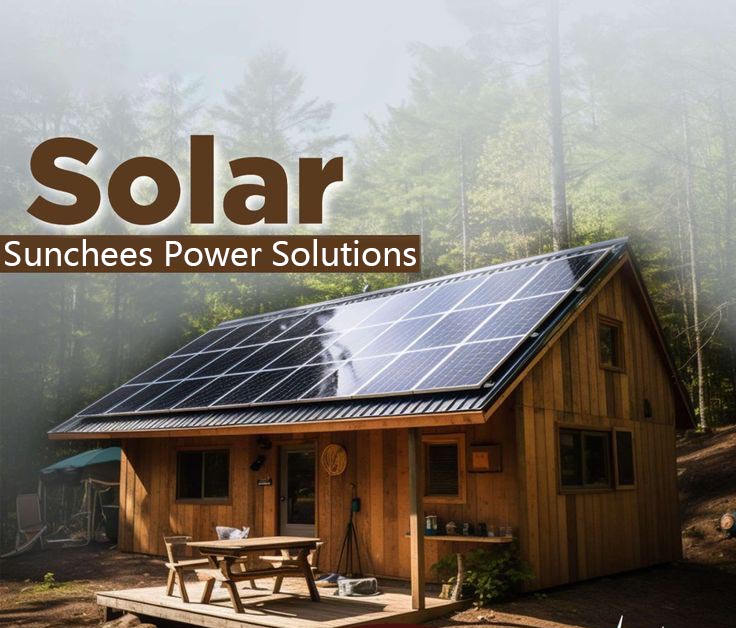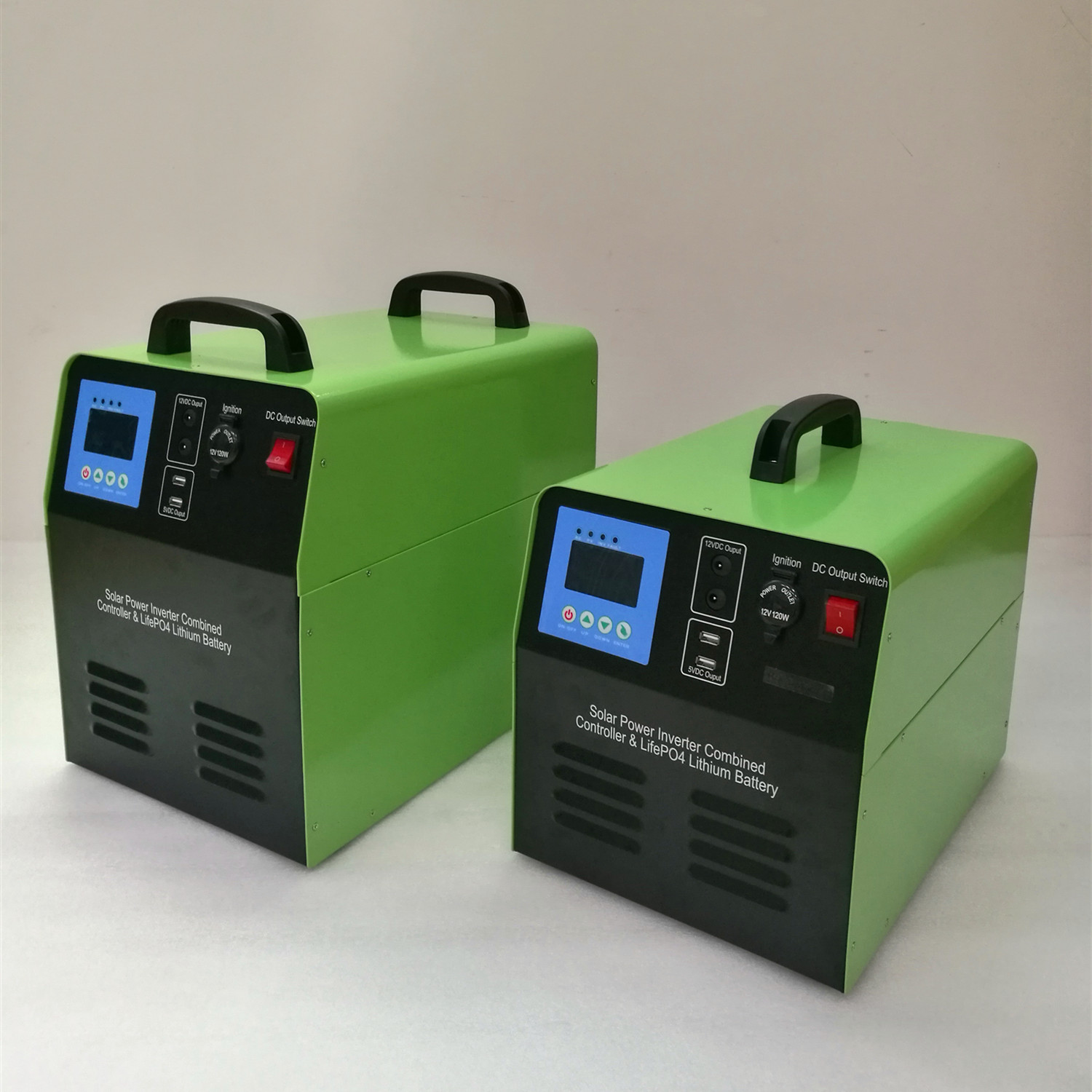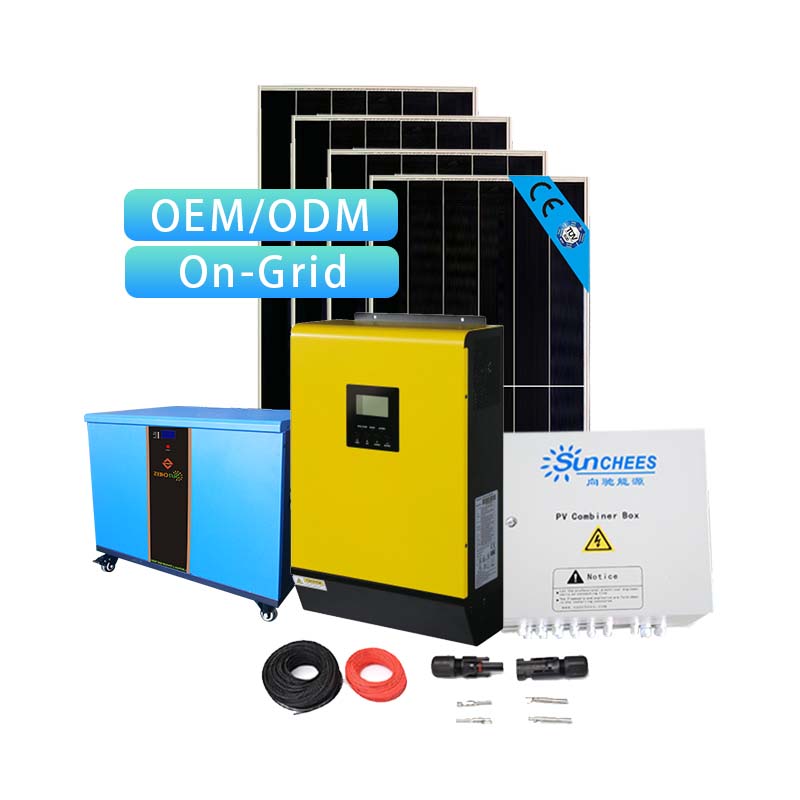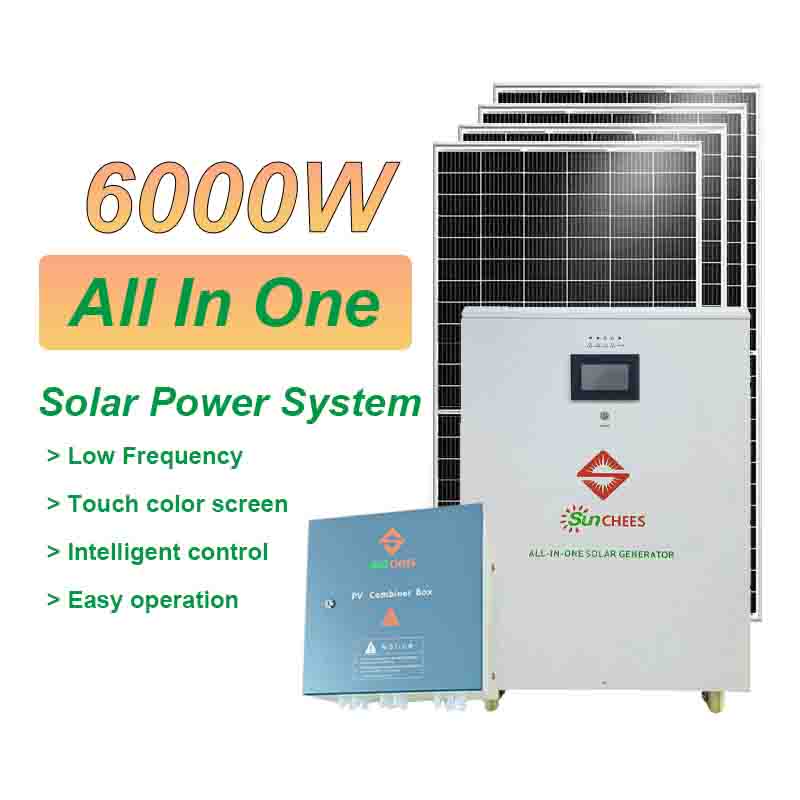Best Home Solar Power System in 2025: Cost, Installation, Battery vs. No Battery Explained
 Jun 05,2025
Jun 05,2025

 sunchees solar system
sunchees solar system
Choosing the right home solar power system, especially whether to include battery storage, is a crucial decision for boosting energy independence and lowering electricity bills. This comprehensive guide dives deep into system capacity, the key differences with and without energy storage, cost comparisons, and optimal installation methods for solar power for residential use.

Home Solar Power System Capacity: 3kW vs 5kW vs 10kW Comparison
The ideal home solar power system capacity depends on your household's electricity needs, budget, local sun exposure, and energy goals. Understanding these factors is key to selecting the best solar power system for home.
-
Solar Panel System Capacity (kW):
- For a household with a typical $200 monthly electricity bill, installing approximately a 14 kW solar power system for home is often recommended. This typically involves around 38 x 370W or 34 x 400-410W solar panels.
- Larger home solar systems might feature 24 x 440W bifacial solar panels, totaling about 10.56 kW, or grid-tied systems with an output of up to 16.32 kW.
- Sizing Guidance for Solar Panels for House:
- Meet Daily Consumption: Start by estimating your annual electricity usage based on your monthly bills. Your solar power system for home should be large enough to generate sufficient power, particularly during peak sunlight hours.
- Consider Available Space: The area on your roof or ground limits the number of solar panels for your home you can install, directly impacting total power generation.
- Battery Charging Needs: If you plan to add a battery, your home solar power system needs extra capacity to charge the battery, beyond just covering immediate consumption.
-
Battery Energy Storage Capacity (kWh):
- Storing Excess Solar: To store surplus daytime solar energy for homes, a typical house might need around a 32 kWh battery bank (e.g., three Tesla Powerwalls).
- Overnight Operation: If your goal is to run your whole home solar system on batteries throughout the night, even during a grid outage, you'll need larger capacity, depending on your nocturnal energy load.
- Specific Appliance Backup: Providing several hours of backup for high-power appliances like central air conditioning significantly increases battery capacity requirements, leading to higher costs for your full home solar power system.
- Available Battery Sizes: The market offers a range of options, from compact 3 kWh units (like those from Sunchees) to larger capacities around 9-10 kWh, and even substantial 50 kWh batteries (also offered by Sunchees).
- Selection Guidance for Solar Units for Homes:
- Backup Duration: How long do you need power during a grid outage? Longer backup times require more capacity.
- Critical Loads: Identify essential appliances for operation during outages (e.g., refrigerator, lights, medical devices) and estimate their power draw and runtime to determine minimum battery needs. High-power appliances typically demand much larger batteries or can only run for short periods.
- Charging Capability: Ensure your solar panels for home can generate enough surplus electricity during the day to fully charge your batteries.
Differentiating with and without Energy Storage for Your Home Solar Power System
The decision to install energy storage batteries is a core distinction for any home solar power system, directly impacting your electricity supply during grid outages and your overall energy strategy.
-
Traditional Grid-Tied Solar System (Without Battery):
- Outage Functionality: During a grid outage, the inverter automatically shuts down according to safety regulations. This means your house will have no power during a blackout, even on a sunny day.
- Electricity Utilization: Primarily relies on "net metering" policies, where excess solar power for residential use is sent back to the grid, and you receive compensation from the utility company.
- Independence: Highly dependent on the grid, offering no backup power during outages.
-
Grid-Tied Solar System with Battery Storage:
- Outage Functionality: Battery systems feature specialized inverters that can "island" your home from the grid during an outage. This allows your home solar power system and batteries to continue supplying power to your house, providing crucial backup.
- Electricity Utilization:
- Priority Self-Consumption: Excess solar energy for homes generated during the day is primarily stored in the battery rather than being sent entirely back to the grid. This is increasingly important as net metering policies change.
- Peak Time Arbitrage: In regions with Time-of-Use (TOU) rates, you can charge your battery during off-peak hours (when electricity is cheaper) and discharge it during peak hours (when rates are highest), leading to significant savings on your electricity bill.
- Independence: Provides greater energy independence, allowing your whole home solar system to keep you powered during grid instability, natural disasters, or maintenance outages.
- Peace of Mind: Having a battery offers a true sense of independence, transforming intermittent solar power into a consistent, reliable base load solution for your solar panels and home.
Cost Comparison: Solar Panels for Home (With vs. Without Batteries)
The initial investment for a home solar power system with batteries is typically higher than a purely grid-tied setup without them. However, the long-term value and return on investment vary significantly based on several factors. This includes solar panels for your home and the overall setup.
-
Federal Tax Credits in the U.S. In the United States, the Residential Clean Energy Credit, often called the Federal Solar Tax Credit or Investment Tax Credit (ITC), is a key incentive. This tax credit encourages residents to install solar panels and other clean energy technologies.
-
Grid-Tied Solar System (Without Battery):
- A 16.32 kW output grid-tied system can cost approximately $32,700 (before federal tax credit) or $24,272 (after enjoying a 30% federal tax credit).
- Payback Period:
- In areas with lower electricity rates (e.g., $0.13 per kWh): approximately 10.3 years (without tax credit).
- In areas with higher electricity rates (e.g., average $0.39 per kWh): approximately 3.46 years (without tax credit); this can shorten to about 2.5 years with the tax credit.
-
Hybrid System with Battery (Grid-Tied + Backup):
- A hybrid home solar power system including a 58 kWh battery, inverter, gateway, and solar panels (24 x 440W, with carport structure), costs around $39,684.
-
Main Component Costs:
- Gateway + Inverter Charger: $6,598
- Batteries (58 kWh): approx. $17,511
- Solar Array (with structure): approx. $17,375
- Payback Period:
- In areas with lower electricity rates (e.g., $0.13 per kWh): approximately 16.7 years.
- In areas with higher electricity rates (e.g., average $0.39 per kWh, peaking over $0.50/kWh): approximately 5.5 years (potentially faster if peak electricity prices are leveraged).
-
Pure Off Grid Solar Power Systems for Homes:
- A 39.6 kWh battery system can cost around $21,000.
- A nearly 60 kWh economical off grid solar power systems for homes (including battery, inverter, and solar panels with basic installation) costs about $17,687.
- Core Consideration: Pure off grid solar power systems for homes are typically not driven by ROI. They are ideal for regions with unstable grids or extremely high grid connection costs (e.g., $20,000-$30,000), primarily offering energy independence.
-
Overall Cost Differences Summary:
- Batteries Add Cost: Energy storage batteries are among the most expensive components of a home solar power system, significantly increasing upfront investment.
- Professional Installation Impact: The costs mentioned above are often based on DIY scenarios. If you hire professional installers, the price for a system of comparable capacity can be much higher. Sunchees offers the best installation guidance.
Roof vs. Ground Mount Recommendation for Solar Panels for House
The installation method for your solar panels for house significantly impacts system efficiency, maintenance convenience, and long-term performance.
-
Roof Installation:
- Advantages: Doesn't use up extra ground space, often leverages existing house structure.
- Disadvantages & Challenges:
- High Installation Difficulty: Requires specialized skills, tools, high-altitude work, and careful roof waterproofing.
- Potential Risks: Improper installation can lead to roof leaks or structural issues.
- Inconvenient Maintenance: Inspecting, cleaning, and replacing panels requires special equipment.
- Recommendation: If you opt for roof installation, it’s strongly advised to hire professional installers to ensure quality construction and roof safety.
-
Ground Installation:
- Advantages:
- Easier Installation & Maintenance: For DIY enthusiasts, ground installation (especially freestanding ground mounts or carport structures) is simpler. You can easily inspect, clean, and replace solar panels without climbing.
- High Flexibility: Allows for optimal angle and direction adjustments based on sun exposure, maximizing power generation efficiency.
- Better Heat Dissipation: Generally, solar panels installed on the ground dissipate heat better than those on roofs, improving efficiency.
- Disadvantages: Takes up additional ground space, may require extra foundation or mounting structure costs.
- Recommendation: For off grid solar power systems for homes, a dedicated ground mount is an excellent choice. This method is easier to manage and maintain long-term.
- Advantages:
Home Electricity Bill Savings Case Studies with Solar Power for Residential Use
Through specific case studies, we can see the real electricity savings and payback periods for solar power for residential use in various regions and electricity rate environments. These highlight how home solar systems deliver value.
-
Case Study 1: New Jersey Household (U.S.)
- Background: Monthly electricity bill of $200.
- System: 14 kW grid-tied home solar power system (without battery).
- Savings: Estimated net savings of approximately $94,000 over the system's lifetime.
- Policy Benefits: Benefited from a 30% Federal Solar Tax Credit and a local (New Jersey) Solar Renewable Energy Certificate (SREC) program.
-
Case Study 2: Las Vegas vs. San Diego Household (U.S.)
-
Grid-Tied System (Without Battery):
- System Cost: $32,700 (pre-tax).
- Annual Generation: 24.2 Megawatt-hours (MWh).
- Las Vegas (Electricity rate $0.13/kWh): Annual savings of $3,146, with a payback period of approximately 10.3 years.
- San Diego (Average electricity rate $0.39/kWh): Annual savings of $9,438, with a payback period of approximately 3.46 years (can shorten to about 2.5 years with tax credits).
-
Hybrid System (With Battery):
- System Cost: $39,684.
- Annual Generation: Average 50 kWh per day.
- Las Vegas (Electricity rate $0.13/kWh): Annual savings of $2,372, with a payback period of approximately 16.7 years.
- San Diego (Average electricity rate $0.39/kWh, peaking over $0.50/kWh): Annual savings of $7,117, with a payback period of approximately 5.5 years (potentially faster if peak rates are utilized effectively by full home solar power systems with batteries).
-
Key Takeaways for Your Home Solar Power System:
- Location and Electricity Rates are Crucial: In regions with higher electricity rates (especially with time-of-use pricing), the payback period for solar panels and home systems (particularly those with batteries) significantly shortens, offering greater economic benefits.
- Tax Credit Policies: Federal tax credits, like the U.S. 30% Residential Clean Energy Credit, substantially reduce the initial investment in solar panels for your home, accelerating the payback period.
- Off-Grid System Value: Pure off grid solar power systems for homes are generally not driven by short-term financial returns. Instead, they provide irreplaceable energy independence in areas with unreliable grid services or extremely high grid connection costs.
Ready to explore the best solar power system for home tailored to your needs? Contact us to learn more about solar for household applications and get expert guidance on choosing the right solar units for homes.




 Home
Home Solar Energy Storage Products for Africa
Solar Energy Storage Products for Africa  You May Also Like
You May Also Like






 Tel
Tel
 Email
Email
 Address
Address















